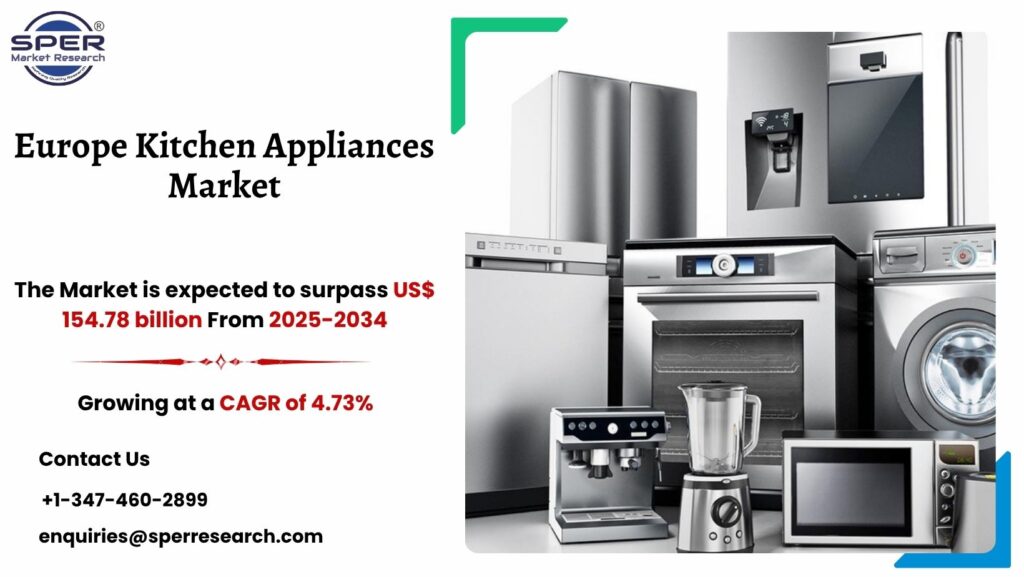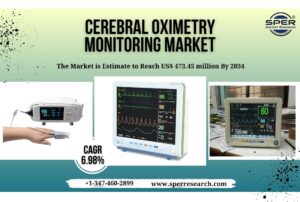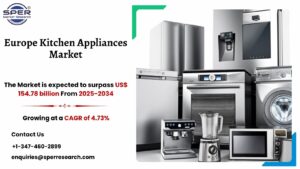Europe Kitchen Appliances Market Size, Share and Analysis

Kitchen appliances are tools and devices designed to make food preparation, cooking, and storage more efficient and convenient. They range from essential items like blenders, toasters, and mixers to advanced equipment such as microwaves, ovens, and smart refrigerators. These appliances help save time, improve precision, and enhance hygiene in everyday cooking. With evolving lifestyles, busy schedules, and increased interest in home cooking, kitchen appliances have become vital in modern households. Innovations in technology, multifunctionality, and energy efficiency continue to make them more user-friendly, transforming routine culinary tasks into faster, safer, and more enjoyable experiences.
According to SPER market research, ‘Europe Kitchen Appliances Market Size- By Product Type, By Type, By Installation, By End User, By Price, By Distribution Channel – Regional Outlook, Competitive Strategies and Segment Forecast to 2034’ state that the Europe Kitchen Appliances Market is predicted to reach 154.78 billion by 2034 with a CAGR of 4.73%.
Drivers:
Rising awareness of energy efficiency and sustainability is driving the adoption of new kitchen appliances across Europe, as consumers prefer items with lower electricity usage and environmental impact. Smart appliances, linked devices, and multifunctional equipment are examples of technological improvements that increase culinary convenience and precision. Changing lifestyles, including busier schedules and a greater emphasis on home cooking, promote the use of time-saving equipment. Furthermore, growing interest in healthy eating, ergonomic designs, and premium kitchen solutions is driving demand. Together, these elements promote consistent growth, innovation, and the adoption of modern, efficient, and consumer-friendly kitchen equipment in European households.
Request a Free Sample Report: https://www.sperresearch.com/report-store/europe-kitchen-appliances-market?sample=1
Restraints:
Adoption of kitchen appliances in Europe is hampered by changing consumer lifestyles such as smaller living spaces, hectic schedules, and altering cooking preferences, all of which lower demand for large or specialised gadgets. The abundance of counterfeit and low-quality items affects consumer faith in brands and causes safety concerns. Some households find it difficult to acquire modern or energy-efficient appliances due to their high upfront costs. Strict regulatory criteria for safety, energy efficiency, and materials put producers under pressure to comply. Furthermore, changing raw material prices, little consumer awareness of appliance care, and long replacement cycles for durable products all impede growth in the sector. Germany dominates Europe’s kitchen appliance market because consumers place a high value on quality, efficiency, and durability, which drives demand for smart and AI-integrated products such as refrigerators, ovens, and dishwashers. Built-in designs are popular for their minimalist, space-saving appeal. In the United Kingdom, technology improvements are increasing demand for smart appliances that interact with apps, voice control, and AI, improving convenience and multifunctionality with equipment such as combination ovens and one-touch coffee makers. Some of the key market players are Ali Group, Arçelik, BSH Home Appliances, Electrolux, Groupe SEB, Haier, Hitachi Appliances, LG Electronics, Midea, Miele.
For More Information, refer to below link: –
Europe Kitchen Appliances Market Share
Related Reports:
Follow Us –
LinkedIn | Instagram | Facebook | Twitter
Contact Us:
Sara Lopes, Business Consultant — USA
SPER Market Research
enquiries@sperresearch.com
+1–347–460–2899





